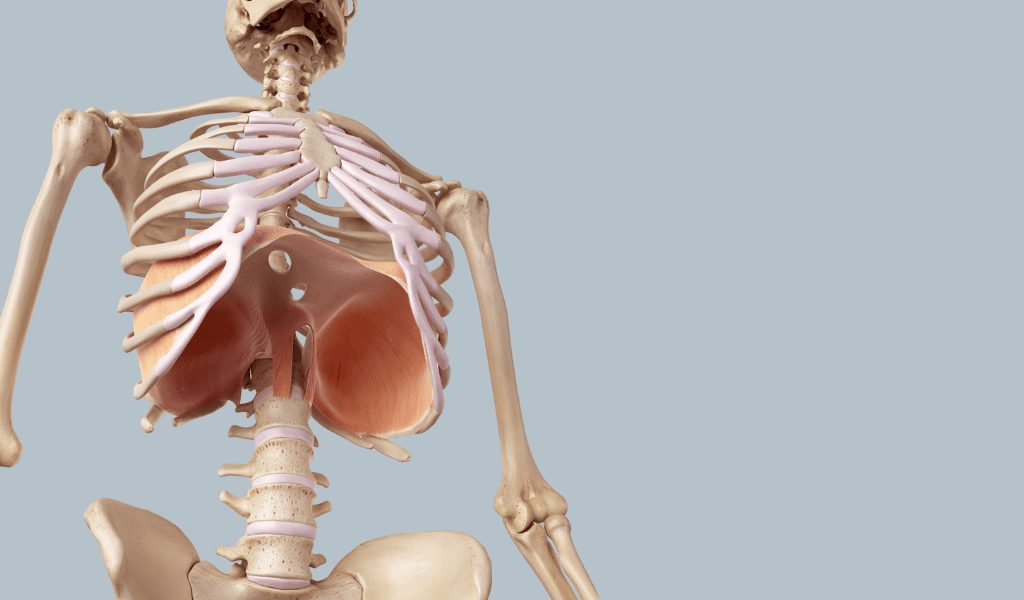Anatomy of the Body, Posture
The Interplay of Posture and Diaphragmatic Function

In the intricate choreography of the human body, posture plays a leading role. Poor posture, whether resulting from prolonged sitting or incorrect movement patterns, can disrupt the ecosystem of muscles and organs. Central to this is the diaphragm, a key muscle in how we breathe. As Pilates instructors, understanding the relationship between posture and the diaphragm’s function can greatly inform our teaching and aid our clients.
THE ROLE OF THE DIAPHRAGM
The diaphragm, a dome-shaped muscle located beneath the lungs, contracts and relaxes with each breath. Its efficient functioning is paramount not only for breathing but also for overall body health, including spinal stability and intra-abdominal pressure regulation.
POOR POSTURE’S IMPACT ON THE DIAPHRAGM
Restricted Movement
Slouched or hunched postures can compress the thoracic cavity, limiting the diaphragm’s space to move. Such constriction can hinder deep, diaphragmatic breathing.
Muscle Imbalance
Poor posture can lead to compensatory muscle patterns. The diaphragm, when impeded, can force muscles like the scalenes and upper trapezius to overwork during respiration, leading to further postural distortions.
Reduced Oxygen Intake
A compromised diaphragm can result in shallow breathing, depriving the body of optimal oxygen, which is crucial for muscle function and energy.
EVIDENCE-BASED INSIGHTS
Several studies have delved into the effects of posture on diaphragmatic function, such as Kolar et al. (2011), who examined the role of the diaphragm in postural control, finding that dysfunction in diaphragmatic dynamics could lead to compromised postural stability.
BRINGING THE KNOWLEDGE TO INSTRUCTING
As Pilates instructors, this information is incredibly important. Emphasising good posture and highlighting its connection to effective diaphragmatic function can lead to –
Enhanced Breathing Techniques
Equip clients with the knowledge to breathe effectively, leveraging the diaphragm’s full range
Improved Core and Spinal Stability
Teach clients how an engaged diaphragm can contribute to core strength and a stable spine.
Holistic Health
Enrich clients’ understanding of the interconnectedness of body systems, and how proper posture can cascade into overall well-being.
The delicate balance between posture and the diaphragm’s function highlights the body’s interconnected nature. Recognising these links, underpinned by research, can refine our teaching methods and deepen our client interactions. After all, Pilates is not just movement; it’s about enhancing the way that the body works holistically.
REFERENCES
Kolar, P., Sulc, J., Kyncl, M., Sanda, J., Cakrt, O., Andel, R., … & Kobesova, A. (2011). Postural function of the diaphragm in persons with and without chronic low back pain. Journal of Orthopaedic & Sports Physical Therapy, 41(4), 352-362.